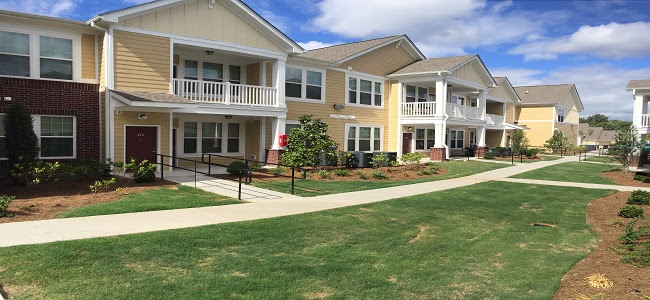
WHAT DOES A NEW PRESIDENT MEAN FOR MULTIFAMILY?
PREDICTIONS IN COMMERCIAL REAL ESTATE FOR 2017

Hollywood – December 12, 2016
Last month’s election, which will result in Republican Party control at both the White House and on Capitol Hill, has raised a number of questions across all sectors. While no predictions can be 100 percent accurate, we have been keeping an eye on expert and analyst opinions in the CRE space since the election. Areas to watch include:
Regulation
The combination of a Republican president and Congress is likely to result in some deregulation, according to experts. A Marcus & Millichap report noted: “A main point of agreement among the Republican Party is the desire to reduce regulations in several key areas of the economy.”
Axiometrics Economist KC Sanjay specifically notes the impact deregulation might have on the residential and commercial real estate market as the home-buying market picks up slightly and as multifamily development increases:
“The financial industry has been overloaded with regulatory oversight since the Dodd-Frank Act was enacted. Expect this to loosen and affect Commercial Mortgage-Backed Securities (CMBS) and the single-family home-buying market in general. Home buying should pick up, albeit slowly, with very little impact to multifamily market from that sector. However, regulations have likely been impacting multifamily construction, and loosening could free up developers to build when the market dictates.”
Infrastructure
Both Axiometrics and Marcus & Millichap point to Republicans’ commitment to infrastructure investment as positive for the multifamily and CRE sector:
“Should meaningful additional infrastructure development be undertaken, it could yield substantive returns, including the creation of jobs and increased efficiency. Roads, transit, bridges, the electrical grid and numerous other projects would vie for funding, potentially benefiting surrounding commercial properties.”—Marcus & Millichap
“Investment in infrastructure could increase productivity levels, which could boost national wealth and add jobs.”—Axiometrics, Sanjay
In our business, we have seen strong performance in commercial real estate that is supported by healthy infrastructure. From transit lines to utility access, infrastructure attracts businesses in all industries. Industry creates jobs, which in turn attract more renters to a market.
In the Southeast region, specifically Florida and Georgia, we have seen strong job and economic growth that continues to support a robust multifamily market.
Rate increases
Experts caution that a change in monetary policy by Trump and a Republican Congress is likely to result in rate increases from the Federal Reserve. Sanjay notes, however, that multifamily cap rates will not increase dramatically.
“Monetary policy will be more data driven, and we expect the pace of Federal Funds Rate increases to ramp up starting mid-next year. Despite the increase, the 10-year T-Bill rate should rise gradually to about the 3% range by the end of 2018. Even with this increase, apartment cap rates are still expected to remain low because of the high investor demand for apartment properties.”—Axiometrics, Sanjay
“If greater fiscal engagement including increased spending and reduced taxes accelerates economic growth as Trump believes, then higher inflationary forces will merit close monitoring by the Federal Reserve. The accelerated economic growth and ensuing inflationary pressure could prompt a quicker pace of rate hikes that are potentially more aggressive.”—Marcus & Millichap
Other experts, however, counter this prediction. The National Real Estate Investor asserts that the unexpected election of Donald Trump will likely delay rate increases that seemed to be imminent based on a strong jobs market and healthy economic indicators. NREI predicts that rates will “probably move upward only one out of the next three meetings as opposed to all three.”
For more perspective on inflation, please refer to our newsletter on investing during inflationary periods.
Capital
NREI also predicts some volatility in the availability of capital due to uncertainty following the election. The NREI prediction quoted PREA researcher Greg MacKinnon as saying, “In the short term, capital market volatility could lead to a drop off in CMBS issuance from what it otherwise would have been through the end of the year.”
The result of that drop-off, according to NREI, would be reduced new construction from CRE developers (multifamily and otherwise). From PointOne’s perspective, that result would help keep vacancy rates at or near their current lows and position existing/redeveloped properties well in the marketplace.
Final thoughts
As we noted above, these potential impacts on the multifamily market under new federal leadership are predictions only. The conflicting viewpoints of the experts we quoted above are evidence of that. While NREI takes a slightly bleaker stance than other researchers, we remain optimistic that the momentum that has carried multifamily through the past several years will continue into 2017.
As we approach new acquisitions, we always evaluate properties with an eye toward potential return. That assessment includes rigorous research on the surrounding community, including economic indicators, job growth, infrastructure and more. Our goal is to invest in multifamily properties in areas with strong rental demand and strong fundamentals.
As we have reported for the past few years, record numbers of individuals in all demographic groups are renting – some by choice and some by circumstance. Those numbers have remained strong for several quarters, and that trend is helping to support a healthy multifamily market for investors with low vacancy rates and rent growth.
As we move into the New Year, we look forward to bringing you additional updates as well as potential opportunities. As always, we welcome your questions, so please do not hesitate to contact us. We look toward the future with optimism, and we look forward to our continued partnership with you.
